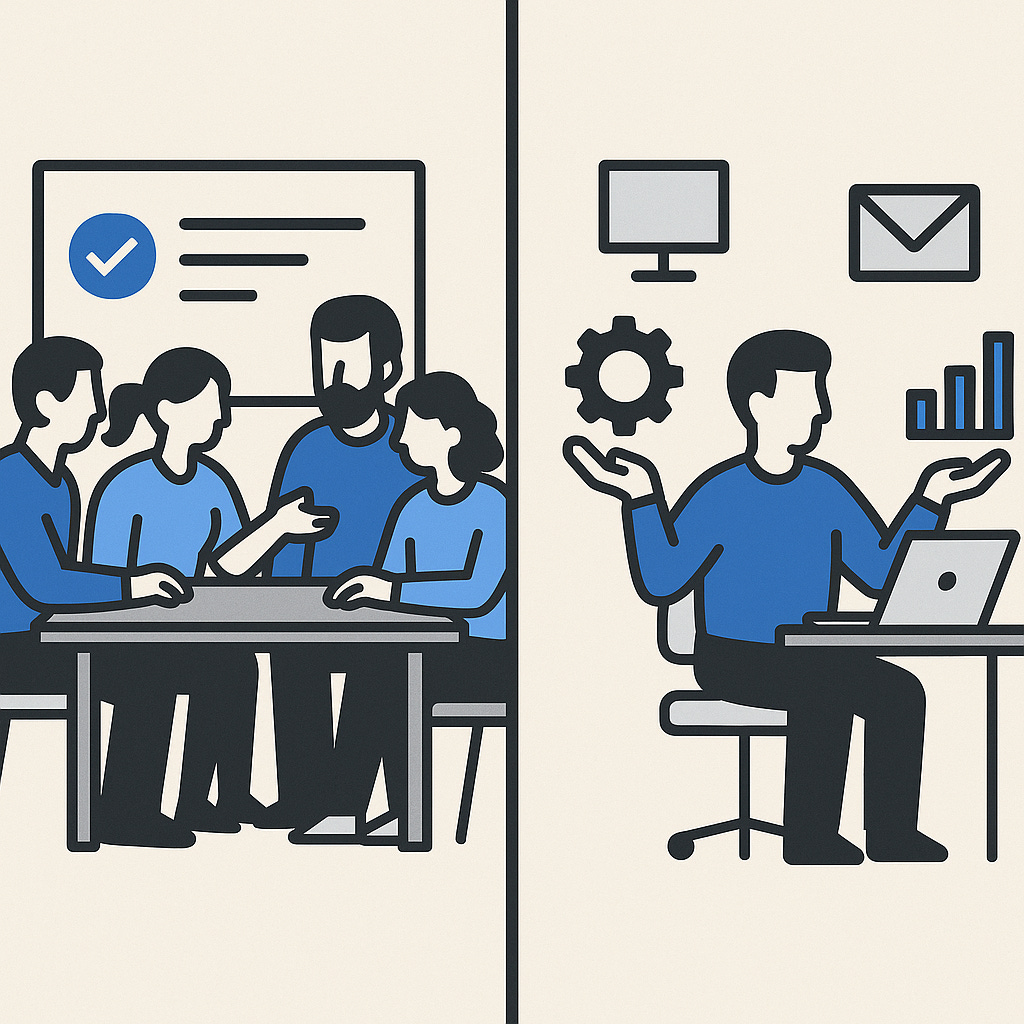Why Dedicated, Cross-Functional Teams Outperform Multitasking Models
If you’re a manager responsible for delivering results, you’re likely balancing competing pressures: move faster, deliver better quality, and make the most of your people. So it’s understandable that assigning individuals to multiple teams based on expertise can feel like the most efficient choice.
But here’s the hard truth: splitting people across multiple teams almost always slows things down—and undermines the very goals you’re trying to achieve.
Let’s look at why dedicated, cross-functional Scrum teams aren’t just ideal—they’re essential.
The Hidden Cost of Multitasking
On paper, assigning specialists to multiple teams seems like a smart way to maximize utilization. But in practice, it introduces delays, confusion, and burnout. Every time someone switches between team contexts, their productivity drops. They spend time catching up, shifting priorities, and responding to conflicting needs.
It’s like having a player on two basketball teams. They can’t run plays with either team effectively. They’re always out of step.
Context switching isn’t a minor inconvenience. It’s a major drag on performance.
What Dedicated Teams Unlock
Scrum works best when a team is stable and cross-functional—meaning they have all the skills needed to deliver value without waiting on others. When teams are truly dedicated, they can:
Swarm on problems in real time
Make and keep commitments
Improve through retrospectives
Take full ownership of outcomes
You’re not just getting faster work. You’re building a unit that learns, adapts, and delivers reliably.
But What About Utilization?
It’s a fair question. Managers often worry that if people aren’t 100% allocated, they’re not being fully used.
But here’s the reframe:
Busy doesn’t equal productive.
True efficiency comes from flow, not full calendars. Dedicated teams reduce handoffs, wait times, and rework. That’s what moves the needle.
Try a Test
Still unsure? Try this:
“Let’s create one truly dedicated, cross-functional team for a single quarter. Then we’ll compare its delivery speed, quality, and morale to teams where people are shared.”
It’s a low-risk experiment—and it gives you real data to guide decisions.
The Bottom Line
Scrum is built on the idea of empowered, focused teams. When we treat people as interchangeable parts instead of cohesive units, we weaken the system.
If your goal is to deliver better, faster, and more predictably, the answer isn’t more meetings or better planning.
It’s dedicated teams that own the work and have the skills to do it.


